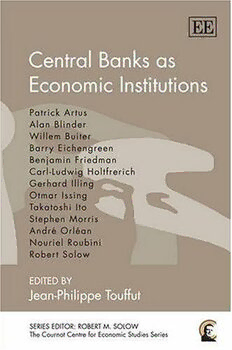
Central Banks as Economic Institutions PDF
233 Pages·2008·1.32 MB·English
Most books are stored in the elastic cloud where traffic is expensive. For this reason, we have a limit on daily download.
Preview Central Banks as Economic Institutions
Description:
The number of central banks in the world is approaching 180, a tenfold increase since the beginning of the twentieth century. What lies behind the spread of this economic institution? What underlying process has brought central banks to hold such a key role in economic life today? This book examines from a transatlantic perspective how the central bank has become the bank of banks. Thirteen distinguished economists and central bankers have been brought together to evaluate how central banks function, arrive at their policies, choose their instruments and gauge their success in managing economies, both in times of crisis and periods of growth.Central banks have sought greater independence from government control over the last 20 years. This widespread quest throws up new questions regarding the foundations, prerogatives and future of this economic institution, which are analysed here. This book provides a better understanding of the current financial crisis through the in-depth study of the central bank. Researchers in the fields of monetary theory, monetary policy and central banking will find this volume of great interest. It will also appeal to students of economics, political economy, banking and finance, as well as economists, academics, and public policy advisers and analysts.
See more
The list of books you might like
Most books are stored in the elastic cloud where traffic is expensive. For this reason, we have a limit on daily download.
